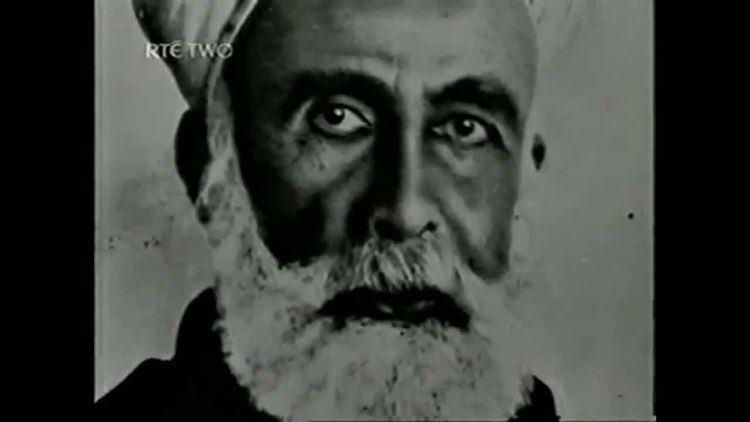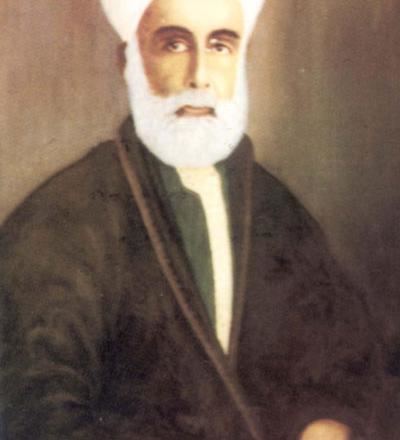Predecessor Position created Role King | ||
 | ||
Reign October 1916 – 3 October 1924 Reign November 1908 – 3 October 1924 Similar People Born 1 May 1854 (age 77), Istanbul, Ottoman Empire Died 4 June 1931 (aged 77) Amman, Transjordan | ||
Wwi arab revolt al hashem 1of2 king of the hejaz hashemite sharif of mecca hussein bin ali
Hussein ibn Ali al-Hashimi (Arabic: الحسين بن علي الهاشمي, al-Ḥusayn ibn ‘Alī al-Hāshimī; 1853/1854 – 4 June 1931) was a Hashemite Arab leader who was the Sharif and Emir of Mecca from 1908 and, after proclaiming the Arab Revolt against the Ottoman Empire, King of the Hejaz from 1916 to 1924. At the end of his reign he also briefly laid claim to the office of Caliph.
Contents
- Wwi arab revolt al hashem 1of2 king of the hejaz hashemite sharif of mecca hussein bin ali
- Hussein bin ali sharif of mecca
- Early life
- Arab Revolt
- Following World War I
- King of Hejaz
- Exile and abdication
- Marriage and children
- National honours
- Foreign honours
- Film
- References

A member of the Awn clan of the Qatadid emirs of Mecca, he was perceived to have rebellious inclinations and in 1893 was summoned to Constantinople where he was kept on the Council of State. In 1908, in the aftermath of the Young Turk Revolution, he was appointed Emir of Mecca by Sultan Abdul Hamid II. In 1916, with the promise of British support for Arab independence, he proclaimed the Arab Revolt against the Ottoman Empire, accusing the Committee of Union and Progress of violating tenets of Islam and limiting the power of the sultan-caliph. Shortly after the outbreak of the revolt, Hussein declared himself 'King of the Arab Countries'. However, his pan-Arab aspirations were not accepted by the Allies, who recognised him only as King of the Hejaz.

After World War I Hussein refused to ratify the Treaty of Versailles, in protest at the Balfour Declaration and the establishment of British and French mandates in Syria, Iraq, and Palestine. He later refused to sign the Anglo-Hashemite Treaty and thus deprived himself of British support when his kingdom was invaded by Ibn Saud. In March 1924, when the Ottoman Caliphate was abolished, Hussein proclaimed himself Caliph of all Muslims. In October 1924, facing defeat by Ibn Saud, he abdicated and was succeeded as king by his eldest son Ali. His sons Faisal and Abdullah were made rulers of Iraq and Transjordan in 1921.

Hussein bin ali sharif of mecca
Early life
Hussein ibn Ali ibn Muhammad ibn Abd al-Mu'in ibn Awn was born in Constantinople in 1853 or 1854 as the eldest son of Sharif Ali ibn Muhammad, who was the second son of Muhammad ibn Abd al-Mu'in, the former Emir of Mecca. As a sharif he was a descendant of Muhammad through his grandson Hasan ibn Ali and a member of the ancient Hashemite House. His mother Bezm-i Cihan, the wife of Ali, was a Circassian.
He belonged to the Dhawu Awn clan of the Abadilah, a branch of the Banu Qatadah tribe. The Banu Qatadah had ruled the Emirate of Mecca since the assumption of their ancestor Qatadah ibn Idris in 1201, and were the last of four dynasties of sharifs that altogether had ruled Mecca since the 10th century.
In 1827 Sharif Muhammad ibn Abd al-Mu'in was appointed to the Emirate, becoming the first Emir from the Dhawu Awn and bringing an end to the centuries-long dominance of the Dhawu Zayd. He reigned until 1851, when he was replaced by Sharif Abd al-Muttalib ibn Ghalib of the Dhawu Zayd. After being deposed he was sent along with his family and sons to reside in the Ottoman capital of Constantinople. It was there that Hussein was born to Muhammad's son Ali in 1270 AH (1853/1854). Muhammad was reappointed to the Emirate in 1856, and Hussein, then aged two or three, accompanied his father and grandfather back to Mecca. However, Muhammad died in 1858 and was succeeded by his eldest son Sharif Abd Allah Pasha. A few years later, in 1278 AH (1861/1862), Ali was recalled to Constantinople while Hussein remained in the Hejaz under the care of his uncle Abd Allah.
Hussein was raised at home unlike other young sharifs, who were customarily sent outside of the city to grow up among the nomadic Bedouin. Reportedly a studious youth, he mastered the principles of the Arabic language and was also educated in Islamic law and doctrine. Among his teachers was Shaykh Muhammad Mahmud at-Turkizi ash-Shinqiti, with whom he studied the seven Mu'allaqat. With Shaykh Ahmad Zayni Dahlan he studied the Qur'an, completing its memorization before he was 20 years old.
During Abd Allah's reign, Hussein became familiar with the politics and intrigue surrounding the sharifian court. He also participated in numerous expeditions to Nejd and the eastern regions of the Hejaz to meet with the Arab tribes, over whom the Emir exerted a loose form of control. He learned the ways of the Bedouin, including the skills needed to withstand the harsh desert environment. In his travels he gained a deep knowledge of the desert flora and fauna, and developed a liking for humayni verse, a type of vernacular poetry (malhun) of the Bedouin. He also practiced horse-riding and hunting.
In 1287 AH (1871/1872) Hussein traveled to Constantinople to visit his father, who had fallen ill. He returned to Mecca after his father's death later that year.
In 1875, he married Abd Allah's daughter Abdiyah. In 1877 Abd Allah died, and Hussein and his cousin Ali ibn Abd Allah were conferred the rank of pasha.
Abd Allah was succeeded by his brother, Sharif Husayn Pasha. After Husayn was assassinated in 1880, the Sultan reinstated Abd al-Muttalib of the Dhawu Zayd as Emir. Displeased at the removal of the Dhawu Awn line from the Emirate, Hussein traveled to Constantinople with two cousins, Ali and Muhammad, and their uncle Abd al-Ilah. However they were ordered to return to Mecca by the Sultan, whose intelligence services suspected that the sharifs were conspiring with European powers, particularly the British, to return the Sharifate to their clan.
The Emirate returned to the Dhawu Awn in 1882 with the deposition of Abd al-Muttalib and the appointment of Sharif Awn ar-Rafiq Pasha, the next eldest of the remaining sons of Sharif Muhammad.
Arab Revolt
Though there is no evidence to suggest that Sharif Hussein bin Ali was inclined to Arab nationalism before 1916, the rise of Turkish nationalism under the Ottoman Empire, culminating in the 1908 Young Turk Revolution, nevertheless displeased the Hashemites and resulted in a rift between them and the Ottoman revolutionaries. During World War I, Hussein initially remained allied with the Ottomans but began secret negotiations with the British on the advice of his son, Abdullah, who had served in the Ottoman parliament up to 1914 and was convinced that it was necessary to separate from the increasingly nationalistic Ottoman administration. The British Secretary of State for War, Field Marshal Lord Kitchener, appealed to him for assistance in the conflict on the side of the Triple Entente. Starting in 1915, as indicated by an exchange of letters with Lieutenant Colonel Sir Henry McMahon, the British High Commissioner in the Sultanate of Egypt, Hussein seized the opportunity and demanded recognition of an Arab nation that included the Hejaz and other adjacent territories as well as approval for the proclamation of an Arab Caliphate of Islam. High Commissioner McMahon accepted and assured him that his assistance would be rewarded by an Arab empire encompassing the entire span between Egypt and Persia, with the exception of British possessions and interests in Kuwait, Aden, and the Syrian coast. On the 2nd of Muharram 1335 (Oct 30 1916), Emir Abdullah called a meeting of majlis where he read a letter in which "Husayn ibn Ali was recognized as sovereign of the Arab nation. Then all those present arose and proclaimed him Malik al-Arab, King of the Arabs." However, even after an assurance by McMahon, Husayn did not receive the lands promised by their British Allies. McMahon claimed that the proposed lands to be taken in by the new Arab State were not purely Arab. In actuality, McMahon refused to hand over the new lands as the areas in question had already been claimed by the new British ally, France.
Following World War I
In the aftermath of the war, the Arabs found themselves freed from centuries of Ottoman rule. Hussein's son Faisal was made King of Syria but this kingdom proved short-lived as the Middle East came under mandate rule of France and the United Kingdom. The British Government subsequently made Faisal and his brother Abdallah kings of Iraq and Transjordan, respectively.
King of Hejaz
When Hussein declared himself King of the Hejaz, he also declared himself King of the Arab lands (malik bilad-al-Arab). This only aggravated his conflict with Abdulaziz ibn Saud, which was already present because of their differences in religious beliefs and with whom he had fought before the First World War, siding with fellow anti-Saudis, the Ottomans in 1910. Two days after the Turkish Caliphate was abolished by the Turkish Grand National Assembly on 3 March 1924, Hussein declared himself Caliph at his son Abdullah's winter camp in Shunah, Transjordan. The claim to the title had a mixed reception, and Hussein was soon ousted and driven out of Arabia by the Saudis, a rival clan that had no interest in the Caliphate. Abd-ul-aziz ibn Sa'ud defeated Hussein in 1924, but he continued to use the title of Caliph when living in Transjordan.
Exile and abdication
Although the British had supported Hussein from the start of the Arab Revolt and the Hussein-McMahon Correspondence, they elected not to help him to repel the Saudi attack, which eventually took Mecca, Medina, and Jeddah. King Hussein was then forced to flee to Cyprus, before going to live in Amman, Transjordan, where his son Abdullah was Emir. After his abdication, another of his sons, Ali, briefly assumed the throne of the Hejaz, but then he too had to flee from the encroachment of the Saudi forces. Another of Hussein's sons, Faisal, was briefly King of Syria and later King of Iraq.
King Hussein died in Amman in 1931 and was buried in Jerusalem on the Haram esh-Sharif or "Temple Mount" in a walled enclosure decorated with white marble and carpets.
Marriage and children
Hussein, who had four wives, fathered five sons and three daughters with three of his wives:
With his first wife Abidiya bint Abdullah he had:
With his second wife Madiha Khanum he had:
With his third wife Adila Khanum he had:
National honours
Foreign honours
Film
In the 1962 film Lawrence of Arabia, Alec Guinness portrayed Prince Faisal, Sharif Hussein's son. In the 1992 film "A Dangerous Man: Lawrence After Arabia", Alexander Siddig portrayed Prince Faisal taking part in the negotiations of the Paris Peace Conference, as a representative of the House of Hashemites, to claim independence of the Arab nation.
